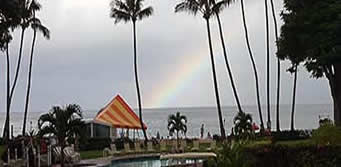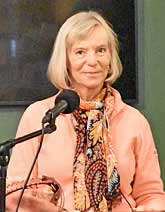 |
|
BOOK REVIEW: SWEET IN TOOTH AND CLAW : Stories of Generosity and Cooperation in the Natural World by Kristin Ohlson Review by Carolyn Dale |
Kristin Ohlson is a writer who likes to get her hands dirty, literally; she is also the author of The Soil will Save Us. When she helps researchers dig in the forest floor in British Columbia, or accompanies workers on an organic coffee plantation in Mexico, her first-hand accounts offer vivid prose. And this personal narrative is bolstered by nearly 140 interviews with experts in each field covered, as detailed in the list of sources. Even though some of the book’s topics have received extensive news coverage, Ohlson adds historical overviews, current insights, and the key questions for future research. News articles may describe how coral reefs are bleaching and dying, but this work fully explains the connections among algae, slimes, coral, and the parrot fish—that sharp-toothed fish snorkelers see chewing on rocks—and also shows how the complex relationship can help reefs recover. Ohlson’s educational background is in English, and she thoughtfully keeps the writing pitched to a lay reader such as myself. Yet describing the interwoven mutual relationships of living beings all the way from the microscopic level to the plant or animal at the ‘top’ of the chain requires detail. At the coffee plantation: “Wandering around, I was sure that these intricate and essential interactions were taking place in every pinch of space. It would take a thousand scientists a thousand years to figure it all out, and maybe not even then.” Fortunately, she doesn’t take the reader along quite that far. After showing how fungi, bacteria, and viruses are doing an enormous share of nature’s fundamental work, she backs off and returns to a wider view and more visible realms. If there is any villain in the overall story, it is mono-crop agriculture and the international chemical conglomerates that push massive amounts of fertilizers, pesticides, and herbicides on farmers who buy their chemically treated, hybridized seed. Ohlson points to recent research as well as farmers’ lived experience to show how this approach has gradually created more problems than it is solving. Visits with organic and regenerative farmers, and with heirloom seed producers, show results that far outstrip field rows planted in a single chemically drenched crop. Human beings, and our presence on Earth, are not the villains in this story. Instead, we’re seen as integral to nature, as co-existing and mutually adapting over eons of time, a viewpoint that offers hope. An example comes in a chapter on successful restoration of grasslands and streams in Nevada that had dried out and turned to wasteland from overgrazing cattle. Experiments with test plots showed the most successful areas were where cattle still grazed, though on a shorter rotational schedule. It turns out that the land left in its “natural” state without cattle didn’t thrive because the grass’s root mass grew too matted. Over millennia, it has evolved to need the hooves of ungulates passing through regularly to loosen up the fibers. Toward the end of the book, Ohlson returns to Oregon, where she lives, and conveys the excitement of urban projects such as installing rooftop gardens and recovering streams to run aboveground, rather than through pipes and culverts. There is a lot that people can do help nature heal, and, as scientists say in their interviews, nature wants so badly to heal that often all it takes is a few steps by a person to start the process. These examples of small-scale, achievable projects, in one’s town, neighborhood, or backyard, are especially promising. A drawback to reading Sweet in Tooth is also one of its strengths. The hardcover edition, at two pounds, is beautiful, with heavy paper, multiple stunning photographs, and a sturdy binding to last for ages on a coffee table. But this volume is meant to be read, and its slightly greater-than-normal width makes for an awkward handful. Nonetheless, the book is a rewarding read that offers new insights flowing from extensive research. In showing how humans can play a positive role within nature, it resembles Braiding Sweetgrass, by Robin Wall Kimmerer. And by concentrating on the essential role of microbes, it coaxes a reader to take on those creatures’ viewpoint, similar to the way Michael Pollan’s The Botany of Desire showed how we humans appear to the plants that encourage us to propagate them. Each human’s skin encloses a gigantic world of microbes that requires feeding and maintenance at a comfortable temperature. No fear, though; of the millions of bacteria and viruses taking shelter, researchers here say that fewer than one percent are harmful. The rest are helping us to live well, and they represent just one of the “Stories of Generosity and Cooperation in the Natural World” that are explored in Sweet in Tooth and Claw. Sweet in Tooth and Claw: Stories of Generosity and Cooperation in the Natural World
|

